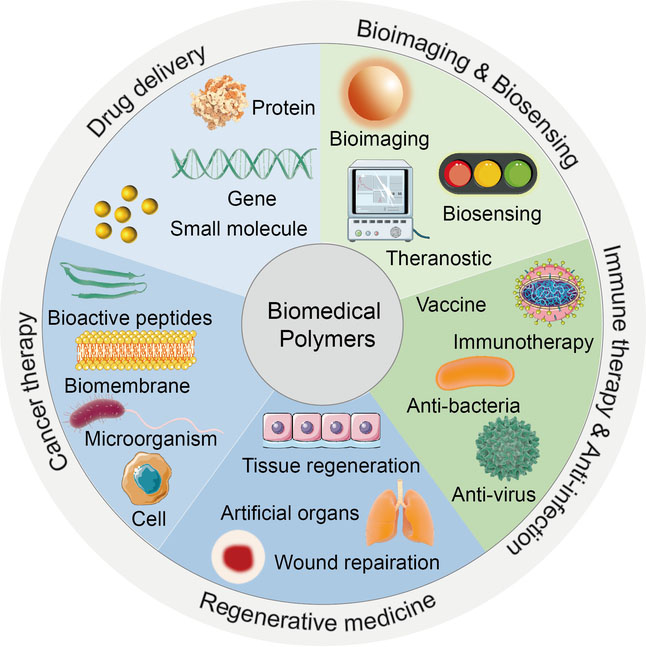| Apr 29, 2022 |
Biomedical polymers: Synthesis, properties, and applications
|
|
(Nanowerk News) Biomedical polymers have been extensively developed for promising applications in a lot of biomedical fields, such as drug delivery, disease detection/diagnosis, biosensing, regenerative medicine, and disease treatment.
|
|
For example, polymer-based carriers provide major advances in improving bioavailability and therapeutic outcomes at spatiotemporal drug delivery, greatly benefiting the treatment of diseases such as cancers, organ grafting, and infections.
|
|
Meanwhile, the rational design of intelligent polymeric carriers can provide stimuli-responsive ability to respond to external or intrinsic signals in specific lesions, thereby achieving precise and targeted localization at lesion sites and triggered release of payloads inside diseased cells for enhanced therapeutic efficacy.
|
|
Moreover, biomedical polymers have been extensively applied to carry out disease theranostics, either as vehicles for delivering both therapeutic and diagnostic agents or as self-theranostic agents, owing to their biocompatibility, biodegradability, structural diversity, and multifunctionality.
|
|
The flexible design of polymer-based theranostic systems can not only target diseased areas within the body, but also provide information on the extent of disease, where applicable, to report the disease’s response to treatment.
|
 |
| Schematic illustration of smart polymers for biomedical applications. (© Science China Press)
|
|
In a latest review reported in Science China Chemistry ("Biomedical polymers: synthesis, properties, and applications"), more than 20 Chinese professors, including Professor Xuesi Chen from the Changchun Institute of Applied Chemistry, Chinese Academy of Sciences and Professor Xian-Zheng Zhang from Wuhan University, summarize the most recent advances in the synthesis and biomedical application of biomedical polymers, and discuss the comprehensive understanding of their property-function relationship for corresponding biomedical applications.
|
|
They especially highlight a group of few burgeoning bioactive polymers, such as peptide/biomembrane/microorganism/cell-based biomedical polymers, as the emerging biomaterials for cancer precision therapy. They also discuss the foreseeable challenges and outlook of the development of more efficient, healthier and safer biomedical polymers.
|

